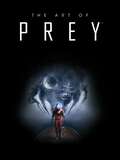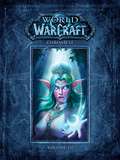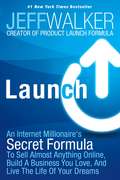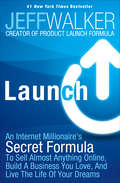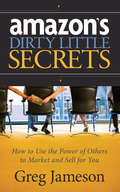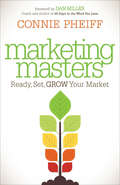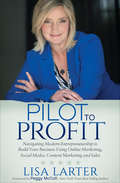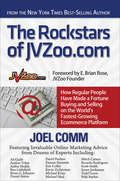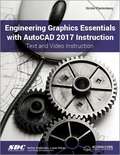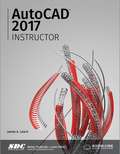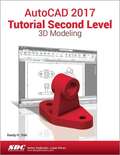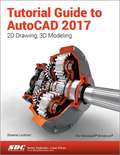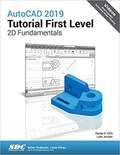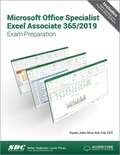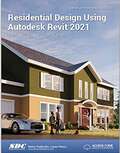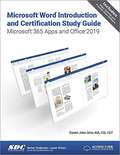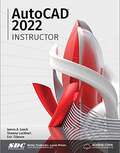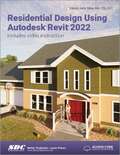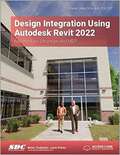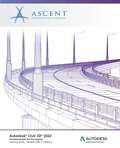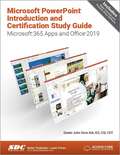- Table View
- List View
Neon Genesis Evangelion: The Legend of Piko Piko Middle School Students Volume 2
by Yushi KawataShinji! Rei! Asuka! And of course...Kaworu! The elite four students of the National Defense Middle School...otherwise known as NERV! They're training to prevent the "New Century Apocalypse"...but will all their training help them when they're demoing dating sims on the main stage at Tokyo's largest game show? • Full of video game parodies--it's Evangelion meets Let's Play! • The most famous anime franchise of the last 20 years! • The latest anime movie, Neon Genesis Evangelion: 3.33 You Can (Not) Redo is available from Funimation. • Each volume contains four opening pages in full color.
The Art of Prey
by BethesdaA dark force torments the enigmatic space station Talos I, and the key to survival depends not just on strength or weaponry, but on wits as well. Journey alongside Morgan Yu to explore the depths of Prey, a new science-fiction action game from the makers of Dishonored.Arkane Studios and Dark Horse Books are proud to present The Art of Prey. This exquisite and comprehensive collection features hundreds of pieces of gorgeous art from the development of this hotly anticipated game, showcasing Arkane's signature world-building and attention to detail with a unique take on futuristic design.The comprehensive art guide to the mysterious Prey universe! Exclusive never before seen concept art from the development of the highly anticipated Prey! One of PCAdvisor and GamesRadar's most anticipated games of 2017!
World of Warcraft Chronicle Volume 3
by Blizzard EntertainmentBlizzard Entertainment and Dark Horse Books are proud to present the third installment of their bestselling World of Warcraft Chronicle series!Like its predecessors, Volume III features beautiful full-color artwork by Peter Lee, Emily Chen, Stanton Feng, and other fan-favorite artists, as well as intricately detailed maps and spot art by Joseph Lacroix. Bolster your knowledge of Warcraftlore with this striking third volume!
Launch: An Internet Millionaire's Secret Formula to Sell Almost Anything Online, Build a Business You Love, and Live the Life of Your Dreams
by Jeff Walker<p>"Launch" will build your business---fast. Whether you’ve already got a business or you’re itching to start one, this is a recipe for getting more traction. <p>Think about it---what if you could launch like Apple or the big Hollywood studios? What if your prospects eagerly counted down the days until they could buy your product? What if you could create such powerful positioning in your market that you all -but- eliminated your competition? And you could do all that no matter how humble your business or budget? <p>Since 1996 Jeff Walker has been creating hugely successful online launches. After bootstrapping his first Internet business from his basement, he quickly developed an underground process for launching new products and businesses with unprecedented success. <p>But the success-train was just getting started---once he started teaching his formula to other entrepreneurs, the results were simply breathtaking. Tiny, home-based businesses started doing launches that sold tens of thousands, hundreds of thousands, and even millions of dollars in sales with their launches. <p>"Launch" is the treasure map into that world---an almost secret world of digital entrepreneurs who create cash-on-demand paydays with their product launches and business launches. <p>Whether you have an existing business, or you have a service-based business and want to develop your own products so you can leverage your time and your impact, or you're still in the planning phase---this is how you start fast. This formula is how you engineer massive success. <p>Now the question is this---are you going to start slow, and fade away from there? Or are you ready for a launch that will change the future of your business and your life?</p>
Launch: An Internet Millionaire's Secret Formula to Sell Almost Anything Online, Build a Business You Love, and Live the Life of Your Dreams
by Jeff Walker"Launch" will build your business---fast. Whether you've already got a business or you're itching to start one, this is a recipe for getting more traction.Think about it---what if you could launch like Apple or the big Hollywood studios? What if your prospects eagerly counted down the days until they could buy your product? What if you could create such powerful positioning in your market that you all -but- eliminated your competition? And you could do all that no matter how humble your business or budget?Since 1996 Jeff Walker has been creating hugely successful online launches. After bootstrapping his first Internet business from his basement, he quickly developed an underground process for launching new products and businesses with unprecedented success.But the success-train was just getting started---once he started teaching his formula to other entrepreneurs, the results were simply breathtaking. Tiny, home-based businesses started doing launches that sold tens of thousands, hundreds of thousands, and even millions of dollars in sales with their launches."Launch" is the treasure map into that world---an almost secret world of digital entrepreneurs who create cash-on-demand paydays with their product launches and business launches.Whether you have an existing business, or you have a service-based business and want to develop your own products so you can leverage your time and your impact, or you're still in the planning phase---this is how you start fast. This formula is how you engineer massive success.Now the question is this---are you going to start slow, and fade away from there? Or are you ready for a launch that will change the future of your business and your life?,
Amazon's Dirty Little Secrets: How to Use the Power of Others to Market and Sell for You
by Greg JamesonMany people believe that Amazon&’s success is the direct result of a strong user shopping experience. This however is only part of the reason why Amazon is the number one ecommerce company in the world for almost two decades. The real reason behind Amazon&’s success is that they have mastered the art of getting other people to market and sell for them. From affiliate partners that drive traffic, to online reviews and ratings where customers tell other customers why they should buy a product, to getting free publicity from shows like Oprah or 60 Minutes, Amazon is the online company to emulate. &“Amazon&’s Dirty Little Secrets" will show you how you can accomplish this for your company. "Amazon&’s Dirty Little Secret" is getting others to do their marketing and sales for them. This is so powerful that Greg created an acronym using the word POWER+.P – Plenty of trafficO – Offer something for freeW – Win their trustE – Engaging experienceR – Request an action+ – additional tips & secretsAnyone engaged in Internet sales and marketing will benefit from the specific examples in this book.
Marketing Masters: Ready, Set, Grow Your Market
by Connie PheiffDrawing from real examples of companies who are practicing creative marketing as well as her experience working with small and enterprise level businesses and nonprofit organizations improve their marketing strategy. Connie provides a revolutionary system for serving, not sales to transform the relationship between companies and customers. When looking to convert consumers in today’s tough business environment Connie’s system can help you immediately implement your creative marketing system by using the tools provided in this book. Today’s marketplace continues to be ravaged by changes---to convert relationships to partnerships, consumers to customers, and ideas into realities you need to think differently. No matter what business you are in, the information in this book will help experts creatively engage and unlock hidden opportunities.
Pilot to Profit: Navigating Modern Entrepreneurship to Build Your Business Using Online Marketing, Social Media, Content Marketing and Sales
by Lisa LarterReady to generate sales, build brand buzz, and watch your cash flow soar? Entrepreneurs, prepare for takeoff! Pilot to Profit clears up the confusion of modern entrepreneurship—so you can build a smart, successful, and sustainable business with sky-high returns. If you find yourself overwhelmed with questions—Do I really need to be on Instagram, Facebook and Twitter? How do these other people command such high fees (and how can I)? How do I double my profits this year without doubling the work?—this book can provide answers to help you get unstuck, as well as proven strategies to help your business get found and turn connections into paying customers, whether you&’re an established enterprise or just starting out. Learn how to: Gain a stronger money mindset and stop sabotaging your ability to be paid what you&’re worth for the work you doSet your money-making &“radar&” on high alertCreate a clearly defined business model that maximizes what comes in, with less effort put outFind the right channels to grow your business so you can reach more peopleCreate content that raises your credibility and puts you on the map (because without great content, your business might never be found)Use email and social media to grow your fan base Lastly, you&’ll walk away understanding how to sell what you do, whom to sell it to, and precisely how to find and connect with those people. This book takes you step-by-step on your journey to building a successful, profitable business you love. With Pilot to Profit, you&’re officially cleared for takeoff.
The Rockstars of JVZoo.com: How Regular People Have Made a Fortune Buying and Selling on the World's Fastest Growing Ecommerce Platform
by Joel CommWhat Does it Take to Be an Online RockstarJVZoo is an amazing resource for entrepreneurs to turn their knowledge into digital products and recruit hundreds or thousands in their field to promote those products. Whether you are a business consultant, lawyer, real estate agent, or even someone who knows how to build the perfect birdhouse, JVZoo allows you to put your knowledge into a format that can be sold and profited from. While the rest of the world looks for jobs, JVZoo’s members create their own.In the three years that JVZoo has been around, it’s members have generated over $100 million in sales revenue. Our members are mainly people who started making money online as a part-time venture.Rockstars of JVZoo is a compilation of case studies, written by people just like you, people who listened to their inner voices and created jobs for themselves. Everything you are about to read in this book has been achieved by ordinary people who did that one thing that separates entrepreneurs from the rest of society: they took action.
Social Media Made Me Rich: Here's How it Can Do the Same for You
by Matthew LoopMatthew Loop has coached and trained thousands of entrepreneurs in more than twenty-five countries. Millions of people have viewed his free social media business-growth tutorials online. Now for the first time, he&’s packaged ten years of experience into a tactical blueprint that reveals the common denominators of the Internet's highest-paid movers and shakers. In Social Media Made Me Rich, he shows you how to harness these same strategies so you can profit big from networks like Facebook, Instagram, YouTube, Twitter, Pinterest, Amazon, and Google.
Engineering Graphics Essentials With AutoCAD 2017 Instruction
by Kirstie PlantenbergEngineering Graphics Essentials with AutoCAD 2009 Instruction covers the main topics of engineering graphics, including tolerancing and fasteners, giving the user a basic understanding of how to create and read engineering drawings as well as teaching them the fundamentals of AutoCAD 2009.
Autocad 2017 Instructor
by James A. LeachThe objective of this book is to provide you with extensive knowledge of AutoCAD, whether you are taking an instructor-led course or learning on your own. AutoCAD 2017 Instructor maintains the pedagogy and in-depth coverage that have always been the hallmark of the Leach texts. As the top-selling university textbook for almost a decade, the AutoCAD Instructor series continues to deliver broad coverage of AutoCAD in a structured, easy-to-comprehend manner. AutoCAD 2017 Instructor is command-oriented, just like AutoCAD. Chapters are structured around related commands, similar to the organization of AutoCAD s menu system.
AutoCAD 2017 Tutorial: First Level 2D Fundamentals
by Randy H. ShihThe primary goal of AutoCAD 2017 Tutorial First Level 2D Fundamentals is to introduce the aspects of Computer Aided Design and Drafting (CADD). This text is intended to be used as a training guide for students and professionals.
AutoCAD 2017 Tutorial: Second Level 3D Modeling
by Randy H. ShihThe primary goal of AutoCAD 2017 Tutorial Second Level 3D Modeling is to introduce the aspects of computer based three dimensional modeling. This text is intended to be used as a training guide for both students and professionals.
Tutorial Guide To AutoCAD 2017
by Shawna LockhartIn fifteen clear and comprehensive chapters, author Shawna Lockhart guides readers through all the important commands and techniques in AutoCAD 2017, from 2D drawing to solid modeling and finally finishing with rendering. In each lesson, the author provides step-by-step instructions with frequent illustrations showing exactly what appears on the AutoCAD screen. Later, individual steps are no longer provided, and readers are asked to apply what they've learned by completing sequences on their own. A carefully developed pedagogy reinforces this cumulative-learning approach and supports readers in becoming skilled AutoCAD users.
Autocad 2019 Tutorial First Level 2d Fundamentals
by Randy ShihThe primary goal of AutoCAD 2019 Tutorial First Level 2D Fundamentals is to introduce the aspects of Computer Aided Design and Drafting (CADD). This text is intended to be used as a training guide for students and professionals. This text covers AutoCAD 2019 and the lessons proceed in a pedagogical fashion to guide you from constructing basic shapes to making multiview drawings. This textbook contains a series of eleven tutorial style lessons designed to introduce beginning CAD users to AutoCAD 2019. It takes a hands-on, exercise-intensive approach to all the important 2D CAD techniques and concepts. This text is also helpful to AutoCAD users upgrading from a previous release of the software. The new improvements and key enhancements of the software are incorporated into the lessons. The 2D-CAD techniques and concepts discussed in this text are also designed to serve as the foundation to the more advanced parametric feature-based CAD packages such as Autodesk Inventor.
Microsoft Office Specialist Excel Associate 365/2019: Exam Preparation
by Daniel John StineInternationally recognized, certification in Microsoft Excel can open up a world of benefits to you, and Microsoft Office Specialist Excel Associate 365/2019 Exam Preparation includes everything you need to prepare for the exam. Designed for those already familiar with Excel, this book provides detailed information about how and where to take the exam and exactly what to expect. Each chapter is built on one of the five exam topics. Ample study material is provided, including practice exam software and video tutorials for every outcome in the book. The author will guide you like a personal Excel coach, helping you to boost your knowledge, pinpoint skills you need to work on, and gain the confidence to be able to pass the exam. Microsoft Excel Certification is an easily verifiable way to showcase your willingness to learn new skills and software, and it provides a myriad of other benefits as well.
Residential Design Using Autodesk Revit 2021
by Daniel John StineDesigned for users completely new to Autodesk Revit, this text takes a project based approach to learning Autodesk Revit’s architectural tools in which you develop a single family residence all the way to photorealistic renderings like the one on the cover. Each book also includes access to extensive video training designed to further help you master Autodesk Revit. The lessons begin with a basic introduction to Autodesk Revit 2021. The first four chapters are intended to get you familiar with the user interface and many of the common menus and tools. Throughout the rest of the book a residential building is created and most of Autodesk Revit’s tools and features are covered in greater detail. Using step-by-step tutorial lessons, the residential project is followed through to create elevations, sections, floor plans, renderings, construction sets, etc. Access to extensive video training is also included with your purchase of this book. These videos break down each topic into several short videos so that you can easily navigate to a specific aspect of a tool or feature in Autodesk Revit. This makes the videos both a powerful learning tool and convenient video reference. The videos make it easy to see the menu selections and will make learning Revit straightforward and simple. It’s like having the author by your side showing you exactly how to use all the major tools in Autodesk Revit.
Microsoft Word Introduction and Certification Study Guide: Microsoft 365 Apps and Office 2019
by Daniel John StineCombining two books in one, Microsoft Word Introduction and Certification Study Guide serves as a training guide for Microsoft Word and a study guide for the Word Certification Exam. Students, professionals, beginners and more experienced users alike can all benefit from this manual. Learn how to create well-formatted, high-quality documents by following along with chapters that focus on six exam topics. These topics closely follow what is needed to ace the exam but also provide comprehensive information for everyday Word users. Careful descriptions and helpful tips for when and how to use important features are provided. Images and screenshots make the steps easy to follow and remember. Each topic starts out with the basics and builds to more complicated steps. Those taking the exam will find practical tips on how to locate a testing center, register for the exam, and get the best score possible, along with study materials including practice exam software and video tutorials for every outcome in the book. Whatever your reason for studying Word, this manual will develop your skills, bolster gaps in your knowledge, and give you the confidence to get certified. Why certification is important Microsoft Word Certification is an easily verifiable way to showcase your willingness to learn new skills and software, and it provides a myriad of other benefits as well. Not only can certification enhance your Word skills, it can help you get hired, boost academic performance, prepare for the demands of a job, open doors to career opportunities, and be more productive and confident working on projects at school, home, or work. Microsoft Word (Microsoft 365 Apps and Office 2019) certification is the first step to prove your skill level and open doors to career opportunities. Outline of the book The dual nature of this book helps you build a strong foundation in Word and prepares you for the exam. The first chapter gets you started right away opening Word and learning about the user interface and important terminology. For those interested in taking the exam, it includes how to register for the exam and find an exam center, tips on using your time wisely during the exam, and information on scores and retaking the exam. The next six chapters cover all of the topics you need to become proficient in Word and coincide with the objective domain categories in the Microsoft Word Certification Exam: Manage Documents; Insert and Format Text, Paragraphs, and Sections; Manage Tables and Lists; Create and Manage References; Insert and Format Graphic Elements; and Manage Document Collaboration. Short video tutorials are included for every single outcome in the book, 95 in all, for when you need extra help or learn best by observation. Word practice exam software included Unlike any other Word exam manual available, this book includes Word practice exam software. The final chapter focuses on the practice exam software, which closely mimics the format of the real exam. Custom-built and specially designed by SDC Publications, this practice exam software can be taken multiple times so you are comfortable with the real test software, how to mark and return to questions, question format, live in-application steps, and how the results are presented.
Autocad 2022 Instructor
by Shawna Lockhart James LeachThis book is your AutoCAD 2022 Instructor. The objective of this book is to provide you with extensive knowledge of AutoCAD, whether you are taking an instructor-led course or learning on your own. AutoCAD 2022 Instructor maintains the pedagogy and in-depth coverage that have always been the hallmark of the Leach texts. As the top-selling university textbook for more than a decade, the AutoCAD Instructor series continues to deliver broad coverage of AutoCAD in a structured, easy-to-comprehend manner. AutoCAD 2022 Instructor is command-oriented, just like AutoCAD. Chapters are structured around related commands, similar to the organization of AutoCAD’s menu system. The sequence of chapters starts with fundamental drawing commands and skills and then progresses to more elaborate procedures and specialized applications. The writing style introduces small pieces of information explained in simple form, and then builds on that knowledge to deliver more complex drawing strategies, requiring a synthesis of earlier concepts. Over 2000 figures illustrate the commands, features, and ideas. AutoCAD 2022 Instructor is an ideal reference guide, unlike tutorial-oriented books where specific information is hard to relocate. Because these chapters focus on related commands, and complete coverage for each command is given in one place, the commands, procedures, and applications are easy to reference. Tabbed pages help locate tables, lists, appendices, and the comprehensive index. What makes this book unique? In depth coverage of AutoCAD 2022 commands and features Command Tables indicate where to locate and how to start each command TIP markers in the margin provide important tips, notes, reminders, short-cuts and identify what's new Complete chapter exercises with many multi-chapter "REUSE" problems Well suited for a two or three course sequence.
Residential Design Using Autodesk Revit 2022
by Daniel John StineThis book is designed for users completely new to Autodesk Revit. This text takes a project based approach to learning Autodesk Revit’s architectural tools in which you develop a single family residence all the way to photorealistic renderings like the one on the cover. Each book also includes access to extensive video training designed to further help you master Autodesk Revit. The lessons begin with a basic introduction to Autodesk Revit 2022. The first four chapters are intended to get you familiar with the user interface and many of the common menus and tools. Throughout the rest of the book a residential building is created and most of Autodesk Revit’s tools and features are covered in greater detail. Using step-by-step tutorial lessons, the residential project is followed through to create elevations, sections, floor plans, renderings, construction sets, etc.
Residential Design Using Autocad 2022
by Daniel John StineResidential Design Using AutoCAD 2022 is an introductory level tutorial which uses residential design exercises as the means to teach you AutoCAD 2022. <p><p>Each book comes with access to extensive video instruction in which the author explains the most common tools and techniques used when designing residential buildings using AutoCAD 2022. After completing this book you will have a well-rounded knowledge of Computer Aided Drafting that can be used in the industry and the satisfaction of having completed a set of residential drawings.
Design Integration Using Autodesk Revit 2022
by Daniel John StineDesign Integration Using Autodesk Revit 2022 is designed to provide you with a well-rounded knowledge of Autodesk Revit tools and techniques. <p><p>All three disciplines of the Revit platform are introduced in this textbook. This approach gives you a broad overview of the Building Information Modeling (BIM) process. The topics cover the design integration of most of the building disciplines: Architectural, Interior Design, Structural, Mechanical, Plumbing and Electrical. Civil is not covered, but adding topography to your model is. Each book also includes access to nearly 100 video tutorials designed to further help you master Autodesk Revit. <p><p> Throughout the book you develop a two story law office. The drawings start with the floor plans and develop all the way to photo-realistic renderings similar to the one on the cover of this book. Along the way the building’s structure, ductwork, plumbing and electrical (power and lighting) are modeled. By the end, you will have a thorough knowledge of many of the Revit basics needed to be productive in a classroom or office environment. Even if you will only be working with one component of Revit in your chosen profession, this book will give you important knowledge on how the other disciplines will be doing their work and valuable insight into the overall process. <p><p> The first four chapters cover many of the Revit basics needed to successfully and efficiently work with the software. Once the fundamentals are covered, the remaining chapters walk you through a building project which is started from scratch so nothing is taken for granted by you or the author.
Autodesk Civil 3d 2023 Fundamentals
by AscentThe Autodesk® Civil 3D® 2022: Fundamentals for Surveyors guide is for surveyors and survey technicians that do not necessarily need all of the functionality that is taught in the Autodesk® Civil 3D®: Fundamentals guide. This guide equips the surveyor with the basic knowledge required to use Autodesk Civil 3D efficiently in a typical daily workflow. You will learn how to import converted field equipment survey data into a standardized environment in Autodesk Civil 3D and to use the automation tools to create an Existing Conditions Plan. <p><p> Data collection and traverses are also covered. Other topics that help in increasing efficiency include styles, correct AutoCAD® drafting techniques, the methodology required to create linework effectively for variables used in defining symbology, surfaces, categorizing points, and using online maps.
Microsoft Powerpoint Introduction And Certification Study Guide: Microsoft 365 Apps And Office 2019
by Daniel John StineServing as both a training guide for Microsoft PowerPoint and a study guide for the PowerPoint certification exam, Microsoft PowerPoint Introduction and Certification Study Guide is an indispensable resource for PowerPoint users at every level of expertise. Starting with the essentials and building to more complicated steps, each chapter breaks one of five essential PowerPoint skill sets into manageable pieces. These are the exact skills measured by the exam, but the logical skill progression benefits all PowerPoint users and prepares you to create effective and compelling presentations. Concise steps and descriptions make the information easy to follow and remember. Clearly labeled screenshots and images clarify important PowerPoint features without being overwhelming. Those taking the exam will find practical tips on how to locate a testing center, register for the exam, and get the best score possible, along with study materials including practice exam software and video tutorials for every outcome in the book. Whether you are looking to develop your PowerPoint skills or to positively impact your school or work life through certification, Microsoft PowerPoint Introduction and Certification Study Guide can help you do both. Why certification is important Microsoft PowerPoint Certification is an easily verifiable way to showcase your willingness to learn new skills and software, and it provides a myriad of other benefits as well. Not only can certification enhance your PowerPoint skills, it can help get you hired, boost academic performance, prepare for the demands of the job, open doors to career opportunities, and be more productive and confident working on projects at school, home, or work. Microsoft PowerPoint (Microsoft 365 Apps and Office 2019) certification is the first step to prove your skill level and open doors to career opportunities. Outline of the book Build a strong foundation in PowerPoint and prepare for the exam with this all-in-one manual. In the first chapter, get comfortable with PowerPoint’s user interface and important terminology. A brief review of efficient practices reminds users of valuable keyboard shortcuts and commands. Those interested in taking the exam will learn how to register for the exam and find an exam center, what to expect during the exam, and get information on scoring and how to retake the exam. The subsequent chapters teach you how to independently create presentations using the core skills measured by the Microsoft PowerPoint Certification Exam: manage presentations; manage slides; insert and format text, shapes, and images; insert tables, charts, smartArt, 3D models, and media; and apply transitions and animations. Practice tasks, a self-exam and review questions after each chapter help solidify the skills you learn. Video camera icons within the text denote exercises that have a corresponding video tutorial, 85 in all, for when you need extra help or learn best by observation. Free PowerPoint practice exam software included Unlike any other PowerPoint exam manual available, this book includes free PowerPoint practice exam software. The final chapter focuses on the practice exam, which closely mimics the format of the real exam. Custom-built and specially designed by SDC Publications, the practice exam can be taken multiple times so you are comfortable with the test software, how to mark and return to questions, question format, live in-application steps, and how the results are presented.

